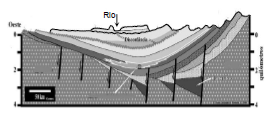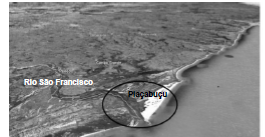Questões de Vestibular CESMAC 2019 para Prova de Medicina-2020.1- 1° DIA
Foram encontradas 48 questões

Disponivel em: <https://caveviews.blogs.com/cave_news/2010/08/webmdeffect.html>. Acessado em 19 de outubro de 2019.
The patient’s assertion
Sobre essa percepção dos Tupis acerca dos povos Macro-Jê, pode-se afirmar que:
Dentre os desdobramentos dessa ocupação, é possível salientar:
(MINC, Carlos. Ecologia e Cidadania. São Paulo, Editora Moderna, 200
Sobre o tema abordado acima, é correto dizer que:
1) o asbesto é um tipo de pó, oriundo da trituração do granito e do gnaisse, muito empregado na construção civil, mas provoca a moléstia asbestose, que consiste numa fibrose hepática, com repercussões nos pulmões daqueles que o aspiram. 2) muitos trabalhadores do setor secundário são expostos a processos intensivos de produção, sobre os quais, muitas vezes, não detêm qualquer controle, e cuja intensidade e duração são determinadas pela maximização dos lucros. 3) com o acúmulo de gases, como o CO2, o óxido nitroso, o metano e o nitrato de prata, maior quantidade de calor é retida na atmosfera, acarretando o aumento da temperatura na baixa troposfera. 4) os efeitos principais da radiação ultravioleta, em face da redução ou destruição do O3 estratosférico, recaem sobre a saúde dos seres humanos, a vida marinha e a vegetação, posto que o ozônio atua como um filtro para essa radiação. 5) numa região intensamente industrializada, a poluição atmosférica aumenta exponencialmente, atingindo a saúde humana, quando sistemas atmosféricos convectivos se instalam sobre ambientes urbanos.
Está(ão) correto(s)

Assinale a alternativa que contém as denominações correspondentes aos números 1, 2, 3 e 4, respectivamente
1) Busca do pleno emprego 2) Propriedade privada 3) Redução das desigualdades sociais e regionais 4) Atrelamento dos sindicatos ao Governo Federal 5) Propriedade estatal dos meios de produção.
Está(ão) correto(s)

1) o agronegócio corresponde ao conjunto de atividades ligadas à agropecuária, que inclui, também, fornecedores de equipamentos e serviços à zona rural e à industrialização de seus produtos. 2) a ocupação do território nacional foi, em grande parte, consequência da expansão da área utilizada por diferentes atividades agropecuárias, como, por exemplo, a pecuária bovina, no Nordeste brasileiro. 3) a cadeia da carne bovina destaca-se no contexto da economia rural brasileira, ocupando vasta área do território nacional e respondendo pela geração de emprego e renda de milhões de trabalhadores brasileiros. 4) as atividades de gerenciamento na pecuária de corte se relacionam diretamente com os processos de planejamento, organização, direção, mas não há necessidade do controle das atividades de manejo reprodutivo e, sim, dos aspectos nutricional e sanitário dos rebanhos. 5) as grandes transformações socioeconômicas, políticas, culturais e tecnológicas decorrentes da globalização aumentaram a complexidade da atividade agropecuária, mas, paradoxalmente, não interferiram nos processos de tomada de decisão nesse setor.
Estão corretas:
Esse fenômeno referido no texto é corretamente denominado de:

Google Earth <Acesso 10/11/2019> O principal rio que atravessa a área, indicada pelo circulo escuro, colaborou, diretamente, para a formação da seguinte feição de relevo:

Fonte: https://pt.wikipedia.org < Acesso em 03-11-2019>